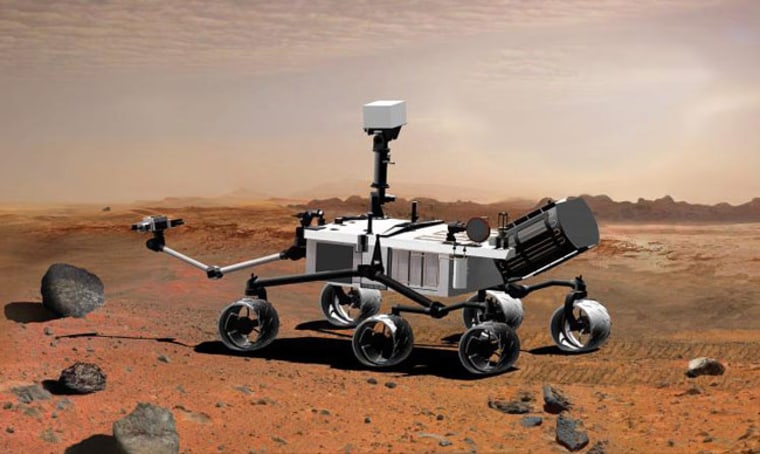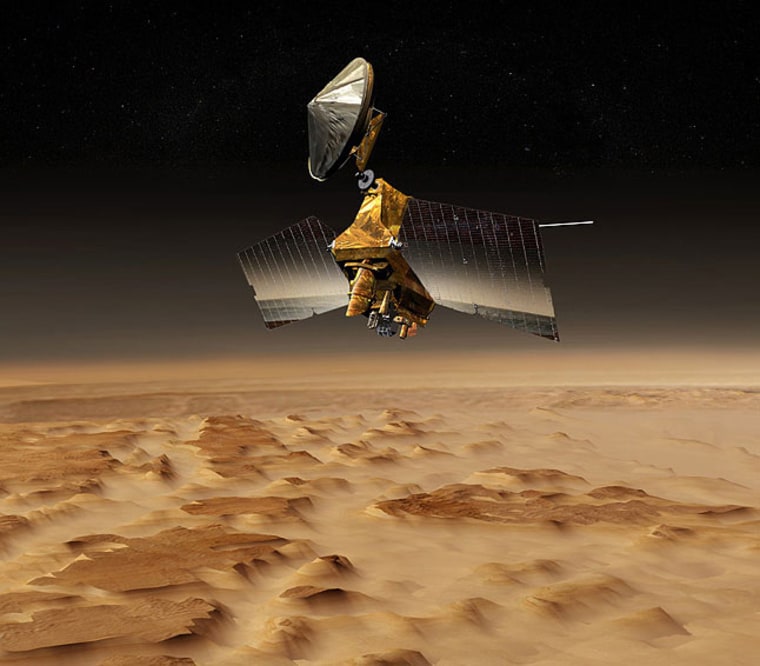Countless science fictions books and films have shown Martian armies attacking the Earth, marching across our planet and enslaving or eradicating any humans they come across. Obviously this hasn't happened ... yet!
In fact, Earth is preparing for an invasion of Mars, but not in the conventional sense. Right now a flotilla of space probes are assembling to storm our neighboring planet, but rather than being armed with heat rays, they're kitted out with the latest in scientific equipment.
Their mission? To learn all they can about the Red Planet, and perhaps even answer the question of whether it harbors alien life.
It's certainly an exciting time for Mars exploration. The rovers Spirit and Opportunity are still scouting out the surface and sending back incredible images. The Phoenix Lander is on its way to Mars right now, and should arrive at the Martian north pole on May 25. After this will come NASA's Mars Science Laboratory, a large rover that will launch next year and arrive in 2010. Finally, the European Space Agency's ExoMars mission is expected to hit the ground in 2014.
It's certainly an attack in force, and two generals planning this assault are Michael Meyer, a lead scientist for NASA's Mars Exploration Program and Luann Becker, a University of California, Santa Barbara geochemist.
To test for alien life the missions will look for organic chemicals — strong clues that living organisms are there. Becker has developed the Mars Organic Molecule Analyzer, or MOMA. She explains, "MOMA is like a Star Trek tricorder because we can use it to cover the full gambit of measurements that will answer the question of life. Then we'll be able to address the difficult question of whether something interesting is there."
This kind of thing has been tried before with the Viking missions of the 1970s, although the results were frustratingly ambiguous. Says Meyer, "Part of the controversy was with Viking's Labeled Release Experiment. The concept was that if we added organics and water to the Martian soil, all the Martian organisms in that soil would go to town eating the organic matter. The organics would in the process be broken down into carbon dioxide gas, and we could measure that."

Basically, samples were warmed up and given food-like chemicals and then watched to see if any microbes reacted. Becker laments, "Viking was an excellent experiment if you think about the strategy behind it: going to Mars and heating a sample, something we do everyday in our laboratory. (But) we got ambiguous results — something might be there, but it might not be there. Anytime you get an ambiguous result, that's considered a non-result."
The same idea of hunting for organic materials is used for modern missions. Half the battle is knowing where to look by deciding which areas are most likely to give interesting results. "Location, location, location," says Becker. "That really is key. We're going to have to use every bit of information we get from the satellites currently flying."
NASA's Mars Reconnaissance Orbiter is taking high resolution photos of the Martian surface, providing valuable intelligence about landing sites. However, a "shotgun approach" is in the cards — scattering the various machines over different areas to sample a range of locations. Says Meyer, "We are sending missions to three different places. Phoenix is going to dig into the ice near the north pole. Mars Science Laboratory has a little drill, so it's going to go to wherever there's exposed bedrock and rocks lying around. ExoMars has a big drill, so it's going to go deeper down into the surface."
With all these missions on the way, hopes are high that we'll soon conquer Mars by uncovering its most guarded secrets. However, past attempts like Viking have proven that Mars is a difficult enemy to overcome. Still, lessons have been learned and many are optimistic. Victory could well be within our sights.
